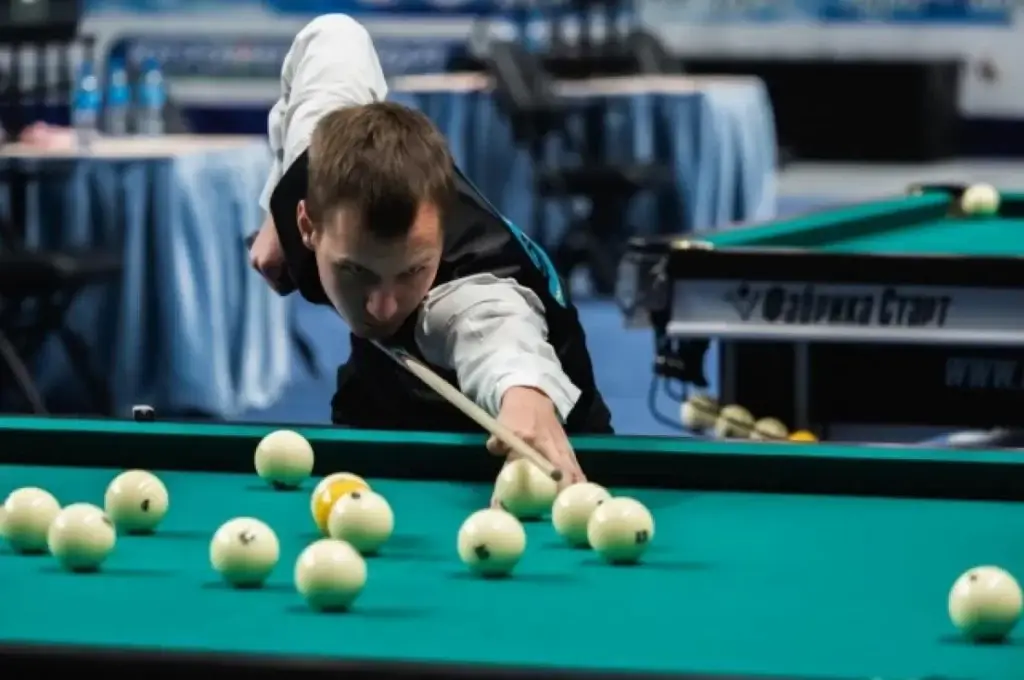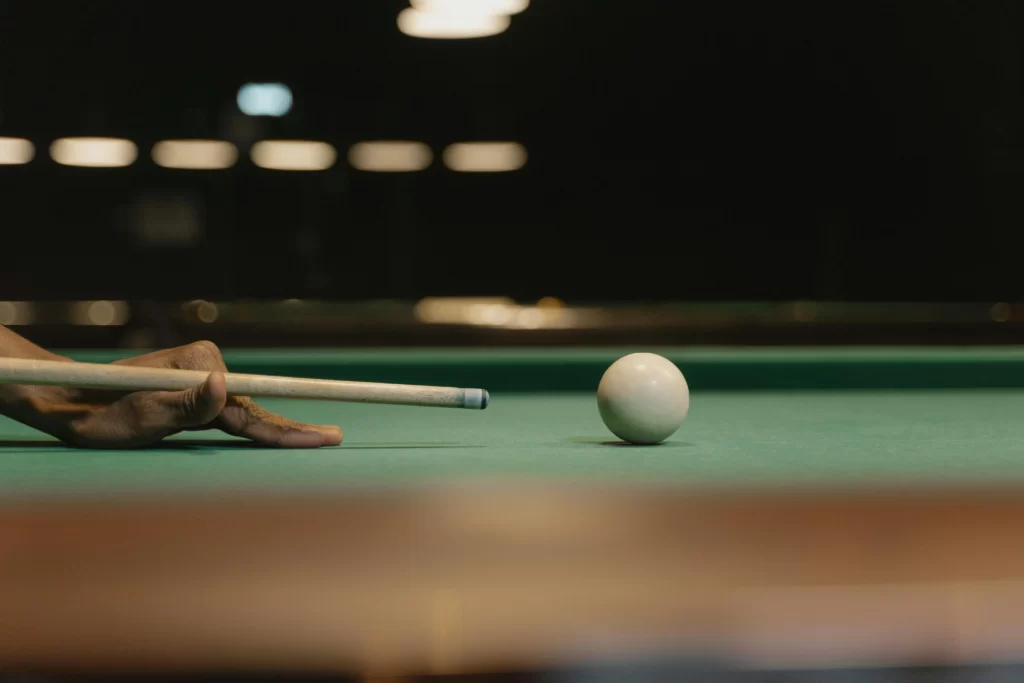Justified passion: why does the world admire the best billiard players? Billiards is a combination of precision, intellectual challenges and incredible charisma – what makes millions of viewers around the world stand enthralled watching the game? The answer lies in the unique combination of technique and psychology that puts the pros at the top. They embody the elite: every shot is a calculation and every tournament a test of endurance and skill. The world of billiards is full of passion, rivalry and majestic moments that rewrite history and inspire generations. These athletes know how to turn complex mathematical calculations into poetry.
Billiard stars: the 5 best billiard players in the world
When it comes to the best, it is hard to overlook a few key names that have forever left their mark on the history of the sport.

- Ronnie O’Sullivan is a multiple world snooker champion, known for his incredible game pace and tactical prowess. His string of records and victories in prestigious tournaments have made him a true legend. In 2020, he became world champion for the sixth time, once again confirming his supremacy over other players.
- Stephen Hendry is a seven-time world champion who dominated the 1990s and set the record for victories at world championships. Hendry was characterised by his aggressive playing style and confidence at the table, making him the youngest world champion in history at 21.
- Efren Reyes is the ‘Wizard’ of the Philippines and has won numerous international billiards tournaments. He is known for his unconventional shots and his ability to get out of the most difficult situations, which has brought him worldwide fame. His victory in the International Champions Challenge in 1995 was the turning point that established his legendary status.
- Mark Selby, a four-time world champion, is known for his resilient nature and his unique ability to get back in the game even in the most difficult situations. His nickname – ‘Mr Perseverance’ – perfectly reflects his ability to fight to the end despite all odds.
- Alexander Palyanov is a Russian master, multiple European and world champion in Russian billiards. His contribution to the development of the sport of billiards in Russia is enormous. He not only participated successfully in international competitions, but also became an inspiring example for young players.
Masters of billiards: how the rankings of billiard players are created
 Success is the result of a combination of many factors, from keube mastery to psychological stability and the ability to maintain concentration during the tournament.
Success is the result of a combination of many factors, from keube mastery to psychological stability and the ability to maintain concentration during the tournament.
The main criteria by which the best billiard players are judged:
- Accuracy of strokes. Players like Ronnie O’Sullivan and Stephen Hendry show incredible accuracy when each stroke is calculated with mathematical precision.
- Tactical thinking. In billiards, it is not only important to hit accurately, but also to anticipate the development of the situation on the table. Mark Selby, for example, is known for his ability to defend, often putting opponents in a difficult situation.
- Mental stability. Championships and tournaments are not just about technique, but also stamina. Spectator pressure, commitment and exciting moments require nerves of steel from players. This is what Efren Reyes is known for, being able to keep his cool in the most stressful situations.
Rankings are formed based on the accumulated points athletes get for their performance in tournaments. There are various systems, such as the World Professional Billiards and Snooker Association (WPBSA) and the International Billiards Federation (WPA) rankings, to assess skills objectively.
Billiards championships and title matches: the history of billiards tournaments
Major championships attract the attention of millions of spectators around the world. There are also some that have become true milestones in history:
- The World Snooker Championship, which has been held since 1927, is one of the most prestigious events. In 2020, Ronnie O’Sullivan won his sixth world championship title, a real triumph in his career.
- The US Open of billiards, which began in 1976, is an important part of world billiards culture. In 1995, Efren Reyes won this tournament, bringing him international fame and cementing his reputation as one of the best billiard players.
- The Snooker Masters is another important tournament, in which legends such as Stephen Hendry and Mark Selby have won.
The competition is characterised not only by its difficulty and competitiveness, but also by its prestige. The number of participants, the geography of the tournaments and the hefty prize money – all these underscore the status of the championships and their importance for participants striving to be among the elite.
Russian billiards in the world: a special look at national traditions
Russian players like Alexander Palyanov, Evgeny Stalev and Nikita Levada have contributed significantly to the development of world billiards. Their unique tactics and Russian culture set them apart from their international rivals:
- Alexander Palyanov is known for his stability and ability to play complex series, making him one of the most recognised players in the Russian pyramid.
- Evgeny Stalev is a master of aggressive play, with his fast pace and determination often causing his opponents problems. He shows incredible technique and combines aggression with precision, making him victorious in the most difficult situations.
- Nikita Levada is a young but promising player who has already won several international titles. His strategic approach and unique combination of techniques make him one of the leading representatives of the new generation of top Russian billiard players.
These athletes embody the Russian school of billiards, characterised by a deep knowledge of the game, tactical diversity and great discipline. Their successes contribute to the popularisation of the discipline in Russia and strengthen the country’s position on the world stage.

Who is the best billiard player in the world: a difficult answer to give
 It is difficult to determine who the best billiard player is because everyone has their own characteristics and merits. Ronnie O’Sullivan impresses with his speed and intuitive understanding of the game; Stephen Hendry, with his perseverance and aggressiveness; Efren Reyes, with the magic of his atypical shots; and Mark Selby, with his stamina and strategic thinking. They are all great in their own way and choosing a leader will always be subjective. The secret of their success is the constant work on themselves, the pursuit of perfection and the ability to overcome difficulties.
It is difficult to determine who the best billiard player is because everyone has their own characteristics and merits. Ronnie O’Sullivan impresses with his speed and intuitive understanding of the game; Stephen Hendry, with his perseverance and aggressiveness; Efren Reyes, with the magic of his atypical shots; and Mark Selby, with his stamina and strategic thinking. They are all great in their own way and choosing a leader will always be subjective. The secret of their success is the constant work on themselves, the pursuit of perfection and the ability to overcome difficulties.
 en
en  ru
ru  de
de  ar
ar  es
es  nl
nl  hi
hi  fr
fr  it
it  pt
pt  el
el 


